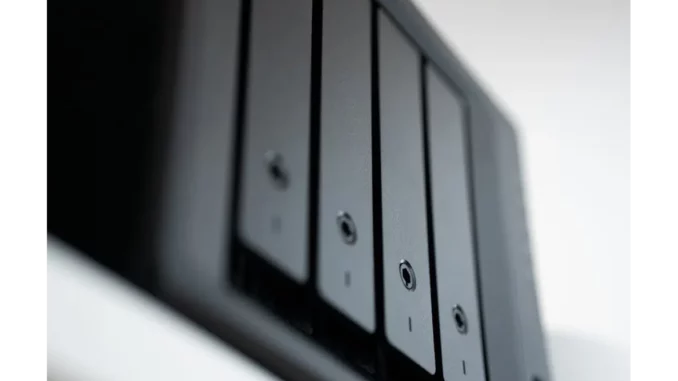
When it comes to managing the mountains of data that videographers produce, the storage solution chosen can make or break a smooth workflow. I recently had the chance to sit down with Thomas Grant, a seasoned videographer and tech enthusiast, to delve into the intricacies of choosing the best NAS system for videographers, regardless of budget constraints. Our conversation centred around the critical factors of drive bays and RAID configurations, which are often the backbone of an efficient data storage setup.
Thomas’s personal journey into the world of NAS began much like many others in the creative field—motivated by chaos. “I remember the days when my desk was drowning in external hard drives, each labelled with a piece of masking tape,” he chuckled. “It was a nightmare when I needed to find a specific clip from a past project.”
He explained that the pivotal moment came during a project where he lost a drive with vital footage due to a hardware failure. “That was the wake-up call,” he confessed. “I realised I needed a more reliable, scalable solution.”
Why Drive Bays Matter
When asked about the importance of drive bays, Thomas was quick to underline their significance. “For videographers, the number of drive bays in a NAS is crucial,” he asserted. “It’s not just about the immediate storage needs but planning for the future.”
He recommends a NAS with 8 to 12 bays for those handling large volumes of 4K and 6K footage. “With bays like these, you can start with a few drives and add more as your storage needs grow,” he elaborated. “Using 10-14TB drives is a sweet spot, offering ample space and allowing for straightforward expansion.”
Thomas also touched on the flexibility that more bays provide. “The more bays you have, the more configuration options you get. It allows for a mix of HDDs and SSDs, which can be beneficial for balancing speed and capacity.”
Diving into RAID Configurations
Our conversation naturally shifted to RAID configurations, a topic that can often seem daunting to the uninitiated. Thomas shared his insights on why understanding RAID is essential for videographers. “RAID isn’t just about redundancy; it’s about performance optimisation,” he explained.
For videographers, Thomas recommends RAID 5 or RAID 6 setups. “RAID 5 offers a good balance between storage capacity and data protection, making it ideal for mid-sized teams,” he noted. “However, if data safety is paramount, RAID 6 is a better choice, as it can handle two drive failures without data loss.”
He emphasised how RAID can significantly impact workflow efficiency. “With RAID, you’re not just protecting your data; you’re also enhancing your data access speeds. This is crucial when you’re working with large video files and need quick access.”
Optimising Speed with NAS
Thomas also shared some tips on how to optimise the speed of a NAS system. “The configuration you choose can dramatically affect your read and write speeds,” he said. “Running all available bays in parallel can significantly boost performance.”
He highlighted the importance of NVMe slots in a NAS. “NVMe SSDs are game-changers. They provide a direct connection to the motherboard, significantly speeding up data access,” he explained. “Using them as a read cache can make a huge difference, especially when multiple users are accessing the system simultaneously.”
Additionally, he suggested ensuring the NAS has at least a 10GbE connection. “It’s a bit of an investment, but it future-proofs your setup and ensures that your network speed doesn’t become a bottleneck.”
A Personal Touch: Thomas’s Recommended Setup
Curious about his current setup, I asked Thomas to share what he uses. He was enthusiastic about the Synology DS1821+ for its balance of power and expandability. “It has 8 bays, NVMe slots, and you can upgrade to a 10GbE network card,” he said. “It’s perfect for someone like me who needs a reliable system with room to grow.”
He pairs this with a combination of WD Ultrastar HDDs and WD Red SN700 NVMe SSDs for caching. “This setup gives me the speed for editing and the capacity for storage,” he explained.
Final Thoughts
As our conversation drew to a close, Thomas reflected on the importance of investing in a proper NAS system. “For any videographer, managing data efficiently is as critical as the camera gear you choose. A good NAS setup not only protects your footage but also streamlines your workflow.”
He left me with a piece of advice for aspiring videographers: “Don’t wait until you’re overwhelmed with data chaos to make the switch. Plan ahead, invest in a NAS that suits your needs today and can grow with you tomorrow.”
In the world of videography, where data is king, understanding the nuances of drive bays and RAID configurations can transform a chaotic data management process into a streamlined, efficient workflow. Whether you’re a solo filmmaker or part of a larger team, the right NAS setup is an investment in your creative future.
Koda Siebert

